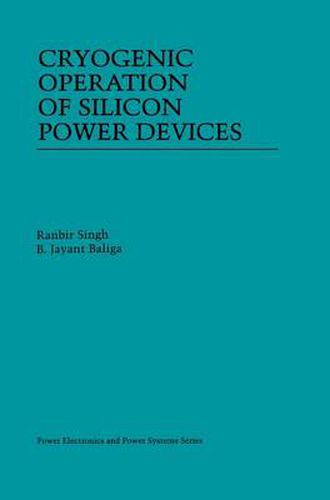Readings Newsletter
Become a Readings Member to make your shopping experience even easier.
Sign in or sign up for free!
You’re not far away from qualifying for FREE standard shipping within Australia
You’ve qualified for FREE standard shipping within Australia
The cart is loading…






This title is printed to order. This book may have been self-published. If so, we cannot guarantee the quality of the content. In the main most books will have gone through the editing process however some may not. We therefore suggest that you be aware of this before ordering this book. If in doubt check either the author or publisher’s details as we are unable to accept any returns unless they are faulty. Please contact us if you have any questions.
The advent of low temperature superconductors in the early 1960’s converted what had been a laboratory curiosity with very limited possibilities to a prac tical means of fabricating electrical components and devices with lossless con ductors. Using liquid helium as a coolant, the successful construction and operation of high field strength magnet systems, alternators, motors and trans mission lines was announced. These developments ushered in the era of what may be termed cryogenic power engineering and a decade later successful oper ating systems could be found such as the 5 T saddle magnet designed and built in the United States by the Argonne National Laboratory and installed on an experimental power generating facility at the High Temperature Institute in Moscow, Russia. The field of digital computers provided an incentive of a quite different kind to operate at cryogenic temperatures. In this case, the objective was to ob tain higher switching speeds than are possible at ambient temperatures with the critical issue being the operating characteristics of semiconductor switches under cryogenic conditions. By 1980, cryogenic electronics was established as another branch of electric engineering.
$9.00 standard shipping within Australia
FREE standard shipping within Australia for orders over $100.00
Express & International shipping calculated at checkout
This title is printed to order. This book may have been self-published. If so, we cannot guarantee the quality of the content. In the main most books will have gone through the editing process however some may not. We therefore suggest that you be aware of this before ordering this book. If in doubt check either the author or publisher’s details as we are unable to accept any returns unless they are faulty. Please contact us if you have any questions.
The advent of low temperature superconductors in the early 1960’s converted what had been a laboratory curiosity with very limited possibilities to a prac tical means of fabricating electrical components and devices with lossless con ductors. Using liquid helium as a coolant, the successful construction and operation of high field strength magnet systems, alternators, motors and trans mission lines was announced. These developments ushered in the era of what may be termed cryogenic power engineering and a decade later successful oper ating systems could be found such as the 5 T saddle magnet designed and built in the United States by the Argonne National Laboratory and installed on an experimental power generating facility at the High Temperature Institute in Moscow, Russia. The field of digital computers provided an incentive of a quite different kind to operate at cryogenic temperatures. In this case, the objective was to ob tain higher switching speeds than are possible at ambient temperatures with the critical issue being the operating characteristics of semiconductor switches under cryogenic conditions. By 1980, cryogenic electronics was established as another branch of electric engineering.